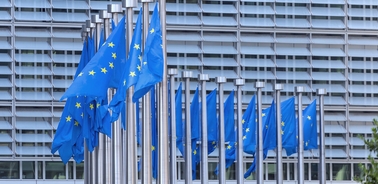- Home
- News And Events
- News
- Can The Eu Digital Markets Act Achieve Its Goals?
Can the EU Digital Markets Act Achieve its Goals?

The first paper of our Digital Revolution and New Social Contract series is out: it looks into how the DMA can tackle economic concentration in the hands of Big Tech companies.
In March 2022, EU institutions reached a political agreement on the Digital Markets Act (DMA), a regulation that targets specific practices adopted by large technology corporations that operate as “gatekeepers” in the digital ecosystem. The DMA pursues three objectives: strengthening the contestability of the gatekeepers’ positions; promoting fair commercial practices between gatekeepers and businesses operating on their platforms; and strengthening the Single Market. The DMA focuses on ten “core platform services” and, given the high thresholds for the identification of gatekeepers, on a small group of large technology giants, including Big Tech and also other large IT companies. Gatekeepers will face a list of “do’s and don’ts”, aimed at preventing them from leveraging their powerful position to impose unfair conditions, restrict user mobility or place competing businesses at a disadvantage. They will also have to notify any attempt to acquire smaller businesses, a provision that is aimed at keeping so-called “killer acquisitions” under control. Should they not comply with these obligations, they will face fines of up to 10% of their total worldwide annual turnover, which becomes 20% in case of repeated infringements.
The DMA is a targeted EU attempt to revive competition in the digital economy, tackling a concentration of power that has become endemic. At the same time, it is neither the only EU attempt, nor an isolated one in the global landscape of digital policy. On the one hand, several potentially impactful measures are being introduced also in the Digital Services Act (especially on targeted advertising and content moderation), and in the Data Act. On the other hand, similar initiatives have been launched in many countries around the world, from the United Kingdom to the United States, Australia, and China. The DMA reflects the EU traditional approach to competition, which looks at preserving a pluralistic market structure and is wary of the perils of firm size per se, regardless of proven abuses. Yet, questions remain.
Is the DMA a proportionate measure, or will it build a straight-jacket for the digital ecosystem, constraining innovation? Can the DMA be effectively enforced in practice? And finally, will it create geo-political frictions, particularly in the case of transatlantic relations?
A first look at the final text suggests that the DMA will require a period of trial and error, as well as future adjustments: to be sure, it should be evaluated early on, possibly already two years after its entry into force. Its chances of succeeding may be enhanced by the creation of a special unit on digital markets inside the European Commission, a joint effort of DG COMP, DG GROW and DG CONNECT, along the examples of UK and Australia; the special unit should then coordinate with the European Data Innovation Board (to be created following the Data Governance Act), the AI Board (created by the AI Act), the European Board for Digital Services (created by the Digital Services Act) and the European Data Protection Board to ensure economies of scale and scope in monitoring and enforcement activities. Moreover, the special unit should issue guidance on how to handle the practices listed in Article 6 of the DMA, gradually moving towards a principles-based approach, rather than a very prescriptive, rigid list of practices; and it should hire sufficient (and sufficiently skilled) personnel. From a geopolitical perspective, the DMA may end up on the table of the EU-U.S. Trade and Technology Council, with a view to a possible alignment of the treatment of large-scale technology corporations across the two sides of the Atlantic.
Yet, even if all these additional measures are adopted, the DMA may become the poster child of a transition from the mere application of ex-post competition rules, towards stable regulation of platforms. The future, however, may require more sophisticated technology-enabled forms of regulation, such as automated, zero-contact information sharing between regulated entities and regulatory authorities.
Andrea Renda, Centre for European Policy Studies and European University Institute, School of Transnational Governance
To read more about the topic and download the full paper, click here.